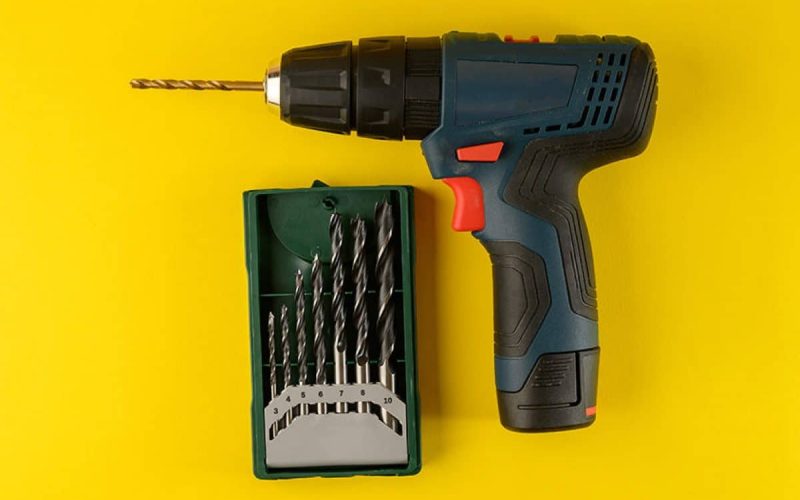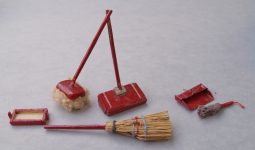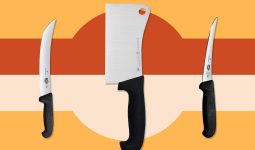Different types of drills are available based on their size, function, speed, and power. At some point, every homeowner will require a drilling instrument.
Let’s imagine you recently purchased a new hanging shelf for your kitchen. To mount it, you’ll need to drill numerous holes in the wall.
You’ll also need to drill holes and install screws if you wish to join two objects together. Drilling tools come in various shapes and sizes, as previously stated.
Regardless of your device, always wear safety glasses, gloves, and a dust mask. Of course, only use high-quality equipment.
So, let’s look at the most prevalent types of drill.
1. Traditional Drill
Drilling holes, installing small fasteners in wood or drywall, and many other simple household jobs are all easy with these drills.
A traditional drill may be all you need for simple projects. However, if you are doing a lot of heavy-duty drilling, a regular drill might not be enough, so an impact drill would be a better option.
2. Impact Driver Drill
A standard drill is not built to handle the same work as an impact driver. The driver rotates like a typical drill, but when it encounters resistance, it uses a series of quick-pounding actions to force fasteners into the surface.
This drill is one of the different drills ideal for larger jobs such as constructing fences, decks, and other structures.
3. Eggbeater Hand drill
This gear-driven drill has a driving wheel that spins when the handle rotates. The drill moves with the chuck as the wheel spins, forcing the bit to rotate. This hand tool excels at drilling small holes in wood and metals.
4. Mini Drill
The hand drill is known as the micro drill, one of the different types of drills. This small device looks like a precision screwdriver, and it’s commonly utilized in high-precision hobbies like watchmaking and jewelry creation. Despite the complexity of their work, they are surprisingly simple to use.
5. Breast Drill
These tools are similar to eggbeater hand drills, except they have a plate affixed to their back. Furthermore, you can apply more significant drilling pressure by pressing the drill with your chest during operation, making this drill more powerful than eggbeater hand drills.
6. Brace Drill
The U-shaped spindle on the brace drill helps you generate additional torque when cranking it, and it also has a top spindle to grab the tool and align it in the right position. In addition, when working with wood, the brace drill is utilized for countersinking.
7. Bow Drill
Because it may ignite fires without matches, this gadget is also known as a fire drill. A bow, hearth, spindle, and bearing block are included. It generates heat by friction, which subsequently ignites a sawdust ember.
8. Hammer Drill
Hammer drills are so powerful that they can drill through concrete rapidly and efficiently. They’re also sturdy enough for demolition, removing tough objects like tile from various surfaces during a remodel, and other tasks.
Hammer drills work by using a quick hammering motion. Both hammer and impact drills use concussion motions, but the methods and consequences are different.
A hammer drill is far too powerful to construct a porch railing, but securing the railing post to concrete is required.
9. Rotary Hammer Drill
This drill is commonly used in the masonry industry and has an additional grip for enhanced control. The fundamental difference between it and a standard hammer drill is that it accelerates the drill bit with pistons rather than cam plates.
10. Combination Drill
This instrument, sometimes called a combi drill, can be used as an impact and a hammer drill. As a result, it’s a fantastic deal for someone who requires both. Combination drills can be used on soft and hard materials.
11. Straight Air Drill
This portable drill is one of the drills ideal for drilling in small or tight locations where standard drills cannot operate. For basic chores, it’s light and straightforward.
12. Reversible Drill
The reversible drill is one of the different types of drills. Reversible drills can change spin direction with a single push or slide of a button. This is very useful when you need to remove screws or other fasteners. A reversible drill’s overall operation is less precise than a non-reversible drill.
13. Crank Drill
The crank drill is one of the different drills with a high helix angle, increasing penetration effectiveness and allowing deep holes in resistant materials.
It also has a sharp tip to help it cut more effectively. In addition, the crank drill is one of the few manual drills that can drill through heavy metals like steel.
14. Gimlet (tool)
A gimlet is a long drill bit with rotation handles on both ends. This gadget uses leverage to dig deep and wide holes, and you can generate additional force by extending the handles.
15. Push Drill
The hand drill has been replaced by the push drill, a smaller but more powerful counterpart of the hand drill. A spiral ratchet is used to rotate the bit. Furthermore, this drill is utilized in woodworking operations that require high precision or accuracy.
16. D-Handle Drill
The D-handle drill is like the rotary hammer drill with a distinctive handle form. Drilling with a D-handle tool can help you gain control and reduce fatigue.
17. Post Drill
The fact that they are mounted on posts gives them their name. These hand-powered presses can bore holes in iron, but the operator’s strength will determine the size and depth of the hole.
18. Table Drill
This general-purpose drilling machine gives you a large, sturdy work area to operate on your materials. However, it may not be appropriate for heavy-duty drilling because it relies on your strength.
19. Cordless Drill
A cordless drill is one of the different battery-operated drills, which makes them quite convenient to use because they can be taken with you wherever you go.
On the other hand, Cordless drills have the lowest power output of all the drill kinds. However, some powerful ones are rather costly.
Another problem with cordless drills is their limited runtime. However, they are perfect for casual home users or professionals working on off-grid construction sites.
20. Corded Drill
Corded drills are one of the different drills that are more powerful and lighter than cordless drills. However, they must always be attached to a wall socket to function, which severely limits their portability. They are, however, excellent drills for heavy-duty use in the workshop.
21. Mechanic Drill
A mechanic drill is one of the different types of drills with a flexible construction that allows the drill to be used for both light and heavy-duty applications. As a result, a single mechanic drill should suffice rather than purchasing two separate drills for softwood and metals.
22. Auger Drill
This is a more extensive drill for drilling holes into the ground. It’s available in one-person and two-person versions. The motor is located above the bit and is controlled by huge grips.
23. Core Drill
When drilling different types of big holes in walls or surfaces, a core drill comes to mind. They include a secondary grip and a safety clutch for improved handling and safety.
25. Pneumatic Drill
Pneumatic drills, often known as jackhammers, use compressed air to power their activities. They are powerful and perfect for heavy-duty rock drilling and pavement-breaking applications. In potentially explosive settings, pneumatic drills are excellent.
26. Floor Drill Press
The benchtop drill press has been upgraded to a more powerful version. Drilling long and solid things is a breeze with the floor drill press.
27. CNC Drill Press
This multipurpose equipment can drill, grind, bore, and turn. It is commonly used in mass production companies to generate exact holes since it is programmable.
28. Paper Drill
As its name suggests, a paper drill makes precise holes in paper. Paper drills are similar to typical wood drill presses in function and appearance; however, their strength varies greatly.
29. Mill Drill
This drill is one of the different drills that can be used to grind materials. It resembles a heavy-duty drill press, except for an immense column and an X-Y table. As a result, it not only bores holes but also eliminates material. As a result, they’re one of the most versatile tools in a machinist’s workshop.
30. Cranial Drill
The skull drill was created to drill holes in dense bones. As a result, unless you work in medicine, you are unlikely to require one. Neurosurgeons most typically utilize cranial drills to make holes in the skull.
31. Dentist Drill
The dental drill has a long handle, a cylindrical head, and a tiny bit, similar to a ratcheting wrench. This machine can spin at incredible speeds of up to 250,000 RPM. As the name suggests, the dentist uses it to work on your teeth.








